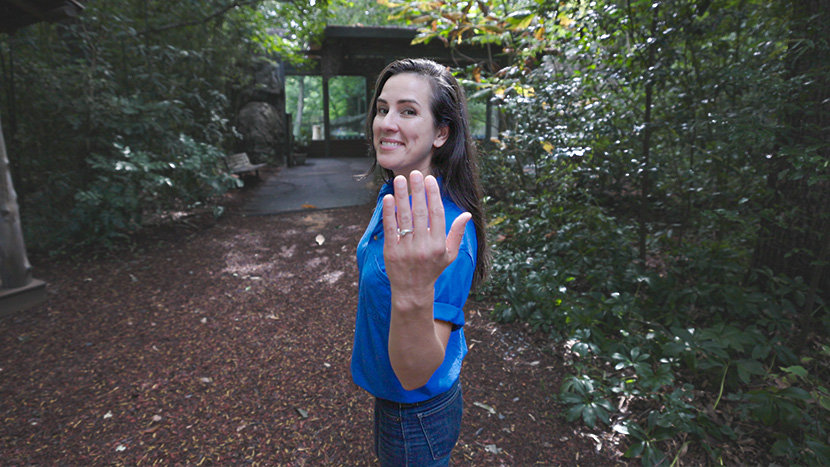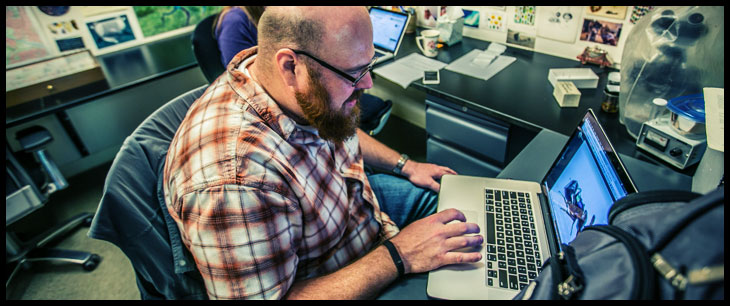Biology Papers: Good Research Makes Good Papers and Posters, Keep it Clear, Simple
Good and great biology investigators can develop at an early age. Natural inquisitiveness, probing questions, and thoughtful insights provide the foundation for future scientists.

Scientists are born every day. Different people have unique personal skills and talents fit for certain types of work or careers. Are scientists, doctors, dentists, lawyers, or whoever, naturals in that field, or are they somehow trained and grown into those vocations?
This question will remain unanswered and left for others to debate and decide. One thing is sure, training in the scientific method and scientific writing benefits all who reasonably apply themselves to the task. It is highly important for students who constantly need to hire essay writer for academic purposes. So it doesn’t matter what career you pursued.
The purpose here is to encourage those who won’t, those who can, and those who influence others to embark upon the less-traveled science road. Today, more than ever, biologists, scientists, and mathematicians are needed and in demand.
Biology Projects, Choose Well, Choose Wisely, Begin Early
Biology projects should be chosen carefully and well. They should be:
- thoughtful and of interest to young scientist-investigators.
- reasonable—easy to design and do.
- good examples of the scientific method.
- safe, not dangerous.
- capable of completion in a reasonable time.
Research Guidelines for Science Fair and Student Biology Research Projects
Biology Science Fair projects and themes typically are approved by the student’s science teacher. Here are some important ideas:
- compose a list of at least 3 possible projects. Think about projects that interest young biologists and people in general. Possible projects might include
- Can the abrasiveness of different kinds of toothpaste be determined by physical and microscopic studies?
- Can toothpaste inhibit microbial growth?
- Can friction differences be determined using inclined planes and standard simple model sleds?
- choose a reasonable hypothesis (pl. hypotheses) for each project, e.g.:
- Different kinds of toothpaste have abrasives and some abrasives can be detected.
- Toothpastes can inhibit microbial growth.
- It is possible to determine friction effects on inclined planes using test sleds or flat objects.
- seek a mentor, in addition to the science teacher; helpful mentors include researchers at the city, state, and federal facilities, college or university biology teachers and professors, businesses such as plant nurseries, electric and water companies, and similar entities. Mentors help guide, advise and direct wisely. They coordinate work with the student’s science teacher.
- plan the research schedule for library research and teacher-mentor time; gather materials and supplies, notebook, and calculator.
- budget the project, so the cost is known. Keep costs low.
- begin when all the above are done, and approval has been given.
Doing Biology Science Projects, Beginning, Middle and End
The science project begins in real-time.
- Maintain a Scientific Notebook. The student’s name is on the cover, the science project name, class number, and other relevant information. Keep it neat, clean, and complete. Number each page and date all entries.
- List all the materials that are used and provide detailed notes on the Methods. Make sure anyone could understand what is written in the notebook.
- Prepare Results Tables and Graphs when appropriate. Take any needed digital photos to show the setup and design of various experiments.
- Repeat each experiment at least two or three times to demonstrate reproducibility.
- Maintain a regular research schedule and follow a timetable to finish the project on time.
- Discuss the project regularly with the biology teacher and mentor. Even fellow student scientists might be involved.
Biology Projects and Science Fair Research Report/Papers and Posters
- With a notebook in hand, begin to write a Title, Abstract, and Introduction for the research done.
- Next, do Materials and Methods writing. Be clear, concise, and complete. Ask — could someone repeat the same experiments from these writings?
- The results section is written next with appropriate figures, graphs and tables added as needed.
- Discussion is the final big section of the paper or poster. Discuss the experiments in a logical, integrated, orderly, and clear fashion. Remember clarity gives a reader knowledge parity. Too many words kill, too few can leave too many questions unanswered.
- Literature Cited is last.
- Acknowledgments at the end are for those who helped make the project possible — biology teachers, mentors, donors of materials or supplies.

Biology Students and Critical Thinking
The study of Biology presents some difficulties for students because it is constantly evolving. In addition, learning techniques and classifications vary among textbooks and teachers.
Some students learned that there are six characteristics of particular phenomenon while others learned nine. These students become fixated on the number of characteristics in textbook lists rather than the actual characteristics. For example, one person may insist that energy, form, and matter are characteristics of life, while missing the point of the text: the seven characteristics of life are the seven criteria that all living organisms must possess. All objects, whether living or non-living, have form, matter, and energy.
Students may perceive this example merely as a discrepancy in theories and say that one is correct over the other, but this is not usually the case. In this case, any pro essay writer agrees that students should:
- Discern the goal of a text. Regarding the characteristics of life, is it describing characteristics that all life forms have or the characteristics that make life unique from non-life? It is not uncommon for students to misunderstand the text or to do poorly on a test because they misread or misunderstood the material.
- Consider what a point truly means and encompasses. If respiration is not listed as a characteristic of life, is metabolism? Respiration is part of metabolism. If the student feels that respiration is not considered on a list that contains metabolism, then the student probably does not adequately understand the concept.
- Think critically. Try to support and refute everything. By searching for evidence both for and against a theory, both students and scientists often find that what they presumed to be true was false; what they thought was wrong was correct; or that a “sure thing” wasn’t so sure, after all.

Biology Concepts and Connections Change with New Research
New concepts are sometimes discovered and either refute previous hypotheses or lead to further understanding that necessitates the reclassification of current knowledge. For example, archaea and bacteria were once classified into a single domain: Domain Prokarya. It was later discovered that archaea and bacteria were quite different even though they look the same.
Biologists found that archaea are more genetically similar to the Domain Eukarya, which includes humans than they are to the Domain Bacteria. This led to the abandonment of the two-domain system in favor of the three-domain system of the Domains Archaea, Bacteria, and Eukarya.
Viruses do not exhibit all of the agreed-upon characteristics of life, but some biologists argue that viruses are living organisms. The discovery that some viruses can be infected by bacteria is convincing and compelling evidence for some biologists that viruses are living organisms. Other biologists refute that theory by pointing out that viruses still do not seem to possess all of the characteristics of life.
New Discoveries Require Further Research
It is critical thinking that many undergraduate biology programs work to develop in their students. Research projects may demonstrate that further research is needed upon the conclusion of a study.

































































































